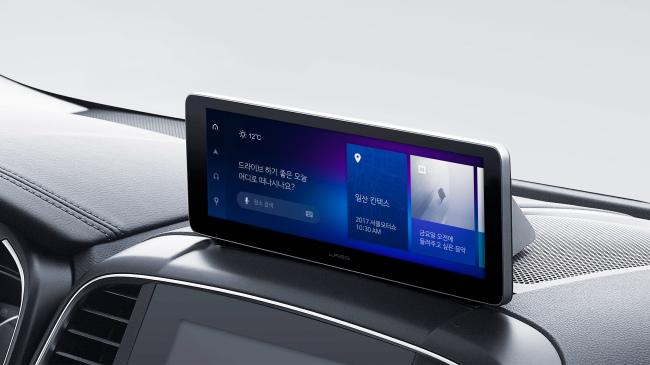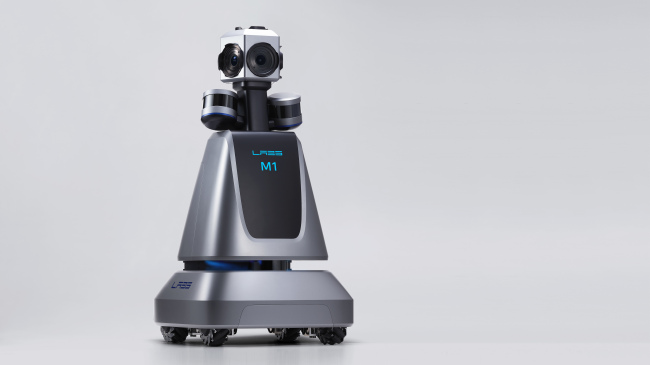South Korean web portal giant Naver on Thursday unveiled intelligence-based self-driving technologies and an infotainment platform for connected cars at the Seoul Motor Show that is set to kick off Friday.
At a press day event held a day prior to the show opening, Naver Labs demonstrated a deep learning-based image recognition technology under works at a 1,000-square-meter booth under the theme of “All Ways Connected, Always Intelligent” at Kintex in Ilsan, Gyeonggi Province.
Naver is the country’s first information technology firm with level-three autopilot technology certified by the US Society of Automotive Engineers. Level-four technology is under development.
The latest tech enables identification of objects and their locations on roads and planning of driving routes. It also allows a vehicle to change lanes by judging space on both sides and in the back.
Accuracy in recognition is the most essential part of Naver’s autonomous driving technology, which plays the roles of brain including data analysis and situational judgement.
 |
An automous vehicle equipped with the IVI platform is exhibited at a Naver booth at the Seoul Motor Show at Kintex in Ilsan, Gyeonggi Province, Thursday. (Naver Labs) |
“Our lab is conducting various experiments in real driving vehicles to test the technology,” said Song Chang-hyun, head of Naver Labs, the research arm of Naver. “We are accelerating R&D efforts on autonomous driving by combining our vision and deep learning technologies with a goal of developing a sophisticated cognitive technology.”
The portal giant also introduced a prototype of its In-Vehicle Infotainment platform, known as IVI, which runs on a voice assistant-based user interface.
The IVI platform logs onto the Naver homepage as driving begins and provides Naver map and navigation services. A driver can search for a destination by speaking to the platform and is guided by the voice assistant.
“Naver Labs seeks Ambient Intelligence that learns from a number of situations in our daily lives and accurately provides needed information instantly,” Song said. “We hope to provide solutions that are naturally absorbed into people’s lives based on immense data of spaces and driving routes.”
 |
3-D map drawing robot M1 (Naver Labs) |
The lab also showed three-dimensional map drawing robot M1 at the booth. Applied with real-time 3-D SLAM technology, the robot generates 3-D maps for indoor-locations that are unreachable via GPS through a 3-D laser scanner.
By Song Su-hyun (
song@heraldcorp.com)









